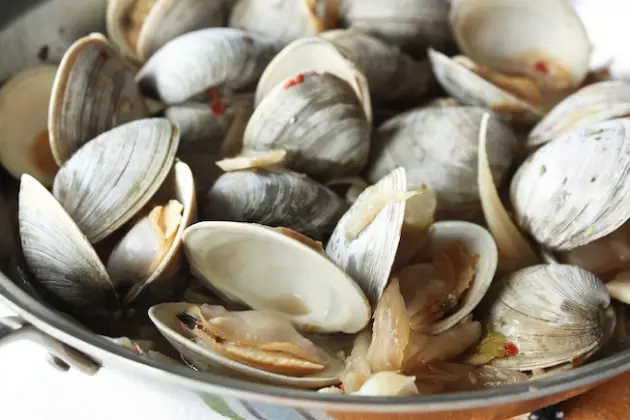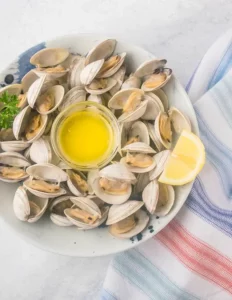Littlenecks Unveiled: Exploring the Culinary Delights and Health Benefits of These Petite Clams
Dive into the world of littlenecks, the small and flavorful clams cherished by seafood enthusiasts. Learn how to cook them to perfection and explore delicious recipes featuring littlenecks. Uncover the health benefits and sustainable harvesting practices associated with these delectable shellfish.
Table of Contents
ToggleIntroduction
Littlenecks, the small and delectable bivalve mollusks, are becoming increasingly popular among seafood enthusiasts and culinary connoisseurs alike. These fascinating shellfish have unique characteristics and offer a delightful taste that complements a variety of dishes. In this article, we will explore the world of littlenecks, from their characteristics and culinary uses to their health benefits and sustainable harvesting practices.
Characteristics of Littlenecks
Littlenecks, scientifically known as Mercenaria mercenaria, are small clams with distinct features. They typically measure around 1.5 to 2.5 inches in size and have a rounded or oval shape. The shells of littlenecks display beautiful colors, ranging from pale yellow to light brown, and often showcase intricate patterns. These clams are primarily found along the coastal areas of North America, including the Atlantic coast and the Gulf of Mexico.
Culinary Uses of Littlenecks
Littlenecks have long been cherished in the culinary world for their tender and flavorful meat. They are a popular ingredient in various seafood dishes, including chowders, stews, and pasta recipes. The delicate brininess and sweet taste of littlenecks add depth and complexity to these preparations. In regional cuisines such as New England, littlenecks are a staple ingredient in dishes like clam boils and steamers, highlighting their regional importance and popularity.
Health Benefits of Littlenecks
Apart from their exquisite taste, littlenecks also offer several health benefits. These clams are packed with essential nutrients, including protein, vitamins, and minerals. Littlenecks are particularly rich in omega-3 fatty acids, which are known for their positive impact on heart health. Consuming littlenecks as part of a balanced diet can help lower the risk of heart disease and promote overall cardiovascular well-being. Additionally, the nutrients found in littlenecks support the immune system and contribute to improved brain function.
Sustainable Harvesting of Littlenecks
With the increasing demand for littlenecks, it is crucial to ensure their sustainable harvesting to protect their populations and preserve the marine ecosystem. Clam harvesting can have environmental impacts, so responsible fishing practices are essential. Fishermen and seafood suppliers are now implementing measures such as size restrictions and limits on harvesting quantities to maintain the balance of littleneck populations. These efforts aim to safeguard littlenecks for future generations to enjoy.
Tips for Cooking Littlenecks
If you’re eager to try cooking littlenecks at home, here are some useful tips. Before cooking, it’s important to clean and store littlenecks properly. Scrub the shells under running water to remove any dirt or sand. Discard any clams with cracked or open shells. Littlenecks can be prepared in various ways, such as steaming, grilling, or incorporating them into pasta dishes. They pair well with flavors like garlic, butter, white wine, and fresh herbs. When serving littlenecks, consider adding a squeeze of lemon juice and a sprinkle of chopped parsley for a refreshing finish.
Frequently Asked Questions (FAQs)
- Are littlenecks the same as clams?
- Yes, littlenecks are a type of clam. They are smaller in size compared to other varieties like cherrystone or quahog clams.
- How do I know if littlenecks are fresh?
- Fresh littlenecks should have tightly closed shells or close when tapped lightly. Avoid clams with cracked or open shells.
- Can I eat raw littlenecks?
- Raw littlenecks can be enjoyed, especially when they are fresh and properly handled. However, it’s important to ensure that they come from reliable sources and are stored at appropriate temperatures.
- Are there any precautions when harvesting littlenecks?
- When harvesting littlenecks, make sure to adhere to local regulations and only gather clams that meet the size requirements. This helps protect the clam populations and maintain a sustainable environment.
- Where can I buy fresh littlenecks?
- Fresh littlenecks can be found at local seafood markets, fishmongers, or reputable grocery stores with a seafood section. Additionally, you may also find them in some online seafood suppliers that offer home delivery.
Conclusion
In conclusion, littlenecks are a delightful seafood option, cherished for their delicate flavor and versatility in various culinary preparations. Whether you’re savoring them in a comforting chowder or enjoying them as part of a seafood feast, littlenecks bring a taste of the ocean to your plate. By understanding their characteristics, health benefits, and the importance of sustainable harvesting, we can continue to appreciate and enjoy these small clams for years to come.


